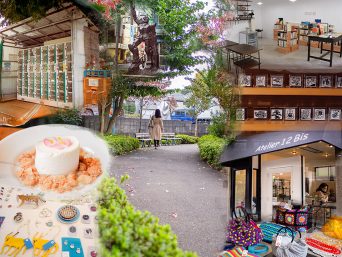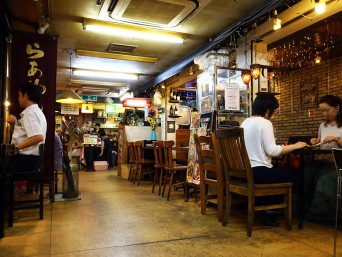- LEARN
- about suginami
- THE HISTORY OF SUGINAMI, TOKYO
THE HISTORY OF SUGINAMI, TOKYO
From the Primitive Age and Ancient Times to the Present
On October 1, 1932, Suginami Ward was incorporated in Tokyo. The name of Suginami comes from the suginami-ki (avenue of cedar) trees planted along Omekaido Road. Since then, for about 90 years Suginami has developed into a comfortable town to live in while keeping its natural beauty.
Please read on about how Suginami Ward has been developed since ancient times to the present along with some Japanese history.
Since when was the land of Suginami inhabited?
It was about thirty thousand years ago that that the land of Suginami was first inhabited. The reason this time period is estimated is that Stone Age tools were found among the relics near Kanda River or Zenpukuji River in this area. Until the 11th century the stage of Japanese history was the Kinki district (Kansai). As Suginami was far away from the Kinki district, almost no written records of Suginami area exist.
Suginami was an agricultural area during the 17th and 18th century.
In 1603 Shogun Ieyasu Tokugawa moved the capital of Japan from Kyoto to Edo (an old name of Tokyo). In order to secure drinking water for Edo, the Tokugawa Shogunate built Kanda Waterworks by pulling water from Zenpukuji River, Kanda River, and Myoshoji River. Although a large part of Suginami was an agricultural area in those days, a post-town was opened in Takaido for travelers going along the Koshukaido road, and it was quite crowded with travelers.
With the beginning of the Meiji Era, the name of Edo was changed into Tokyo. Suginami was incorporated as part of Kanagawa Prefecture for a while, but in 1872 Suginami was incorporated as part of Tokyo again.
In 1889, Suginami was separated into four villages: Wadahoriuchi, Suginami, Iogi and Takaido. This was when the name Suginami was first used officially.
Suginami became a popular residential area after the Great Kanto Earthquake
On September 1, 1923, the Kanto District (Tokyo and surrounding region) was hit by a mega earthquake with a 7.9 magnitude. On account of this earthquake more than one hundred thousand people were killed, and about three hundred thousand houses were seriously damaged. Because of this catastrophe, lots of people moved from the central parts of Tokyo to the suburban areas like Suginami, and the population of Suginami sharply increased. Also, Nakajima Aircraft Company built a large-scale plant in Suginami, which had a large influence on Suginami. That is, Suginami, which had been a small town of agriculture and commerce, turned into a busy area. A few thousand laborers were working at the company at its peak. After the Second World War, the company was dismantled, and the site has turned into Momoi Harappa Park and the Tokyo Sales Office of Nissan Prince Co., Ltd.
The birth of Suginami Ward and the present
In 1932, Suginami Ward started with the population of approximately one hundred forty-six thousand.
As for railways, the Keio Inokashira Line followed by the JR Chuo Line and Seibu Shinjuku Line were opened for transportation. At the beginning of Showa period, many bunshi, professional writers and literary people, came to live in Asagaya and Ogikubo.
In 1963, when Japan was at its high economic growth period, most of the names of the towns became the present ones, and the population reached approximately five hundred thousand. The year after, the 1964 Tokyo Olympic Games were held, and many Suginami residents cheered for the athletes.
The Suginami Historical Museum, opened in 1989, has a permanent exhibition room, where you can learn about the thirty thousand-year history of Suginami. If you are interested in the history of Suginami, please visit the museum if you have a chance when visiting Tokyo. The surrounding area by the Zenpukuji River is a peaceful place full of nature where many of the museums artifacts were discovered.
References: Suginami Gaku Club (Japanese website)
From village into town and from town to ward
Maps of Suginami at different periods



















